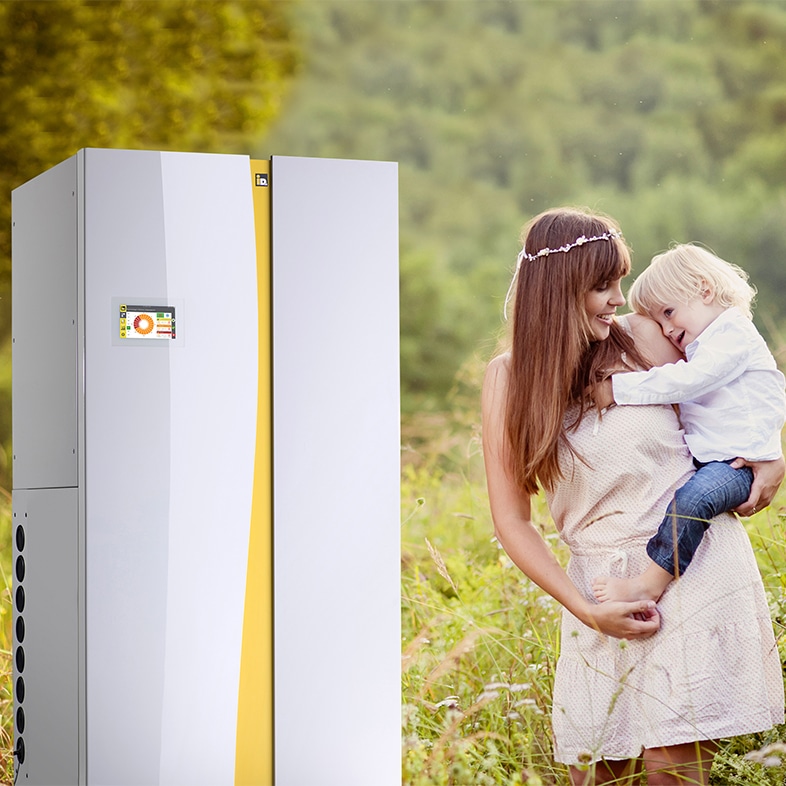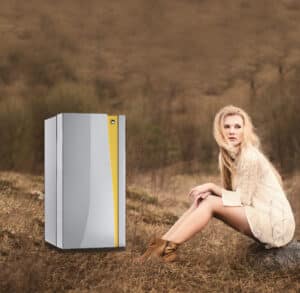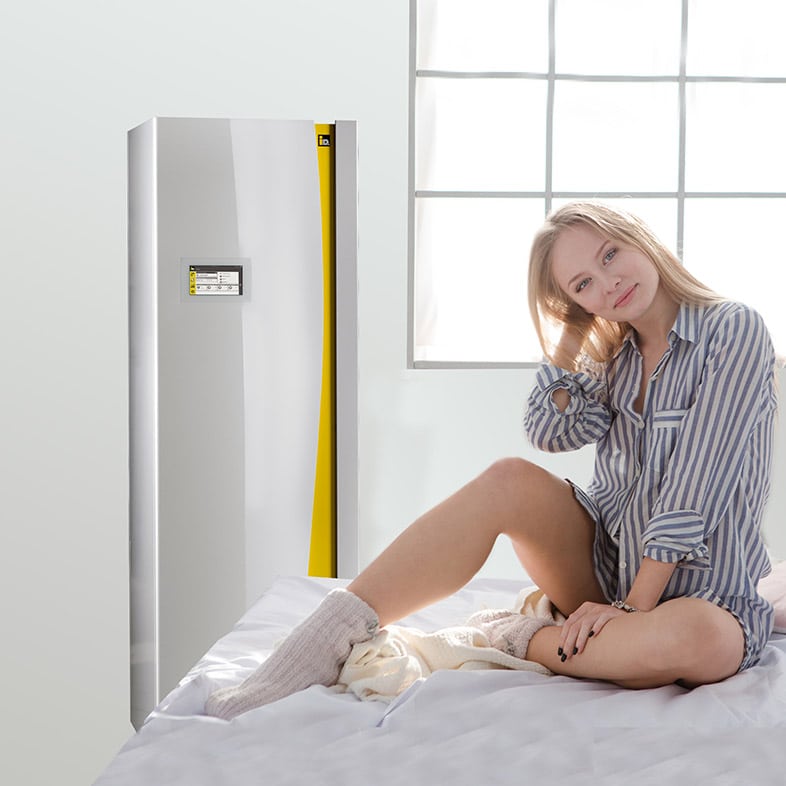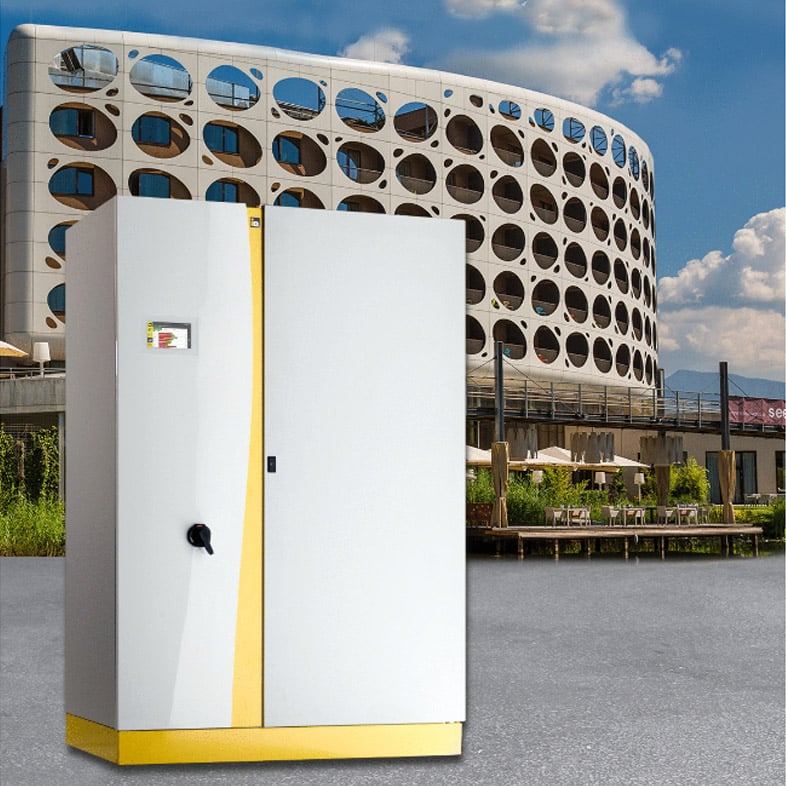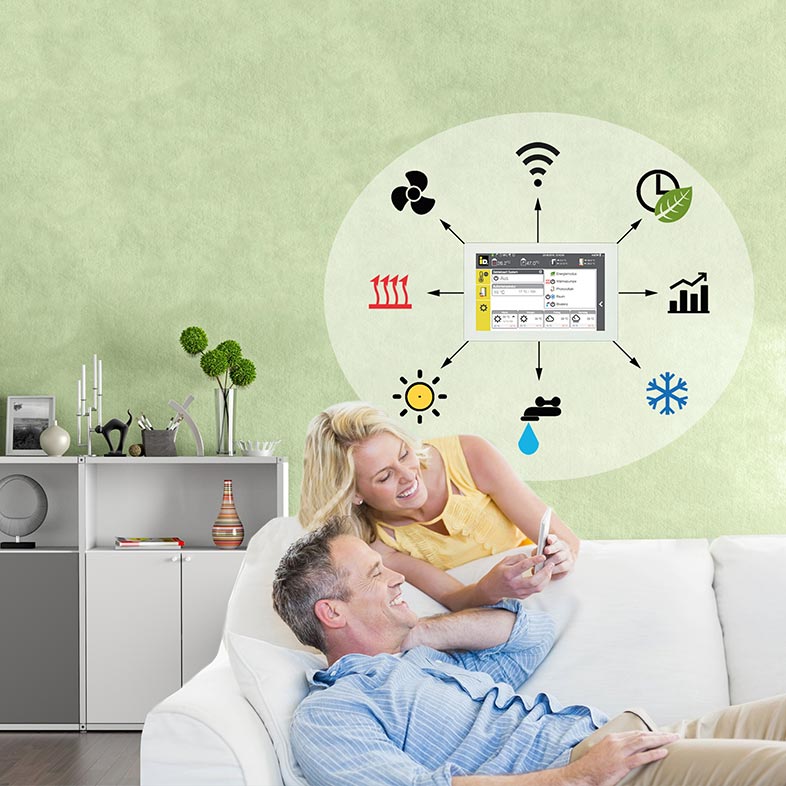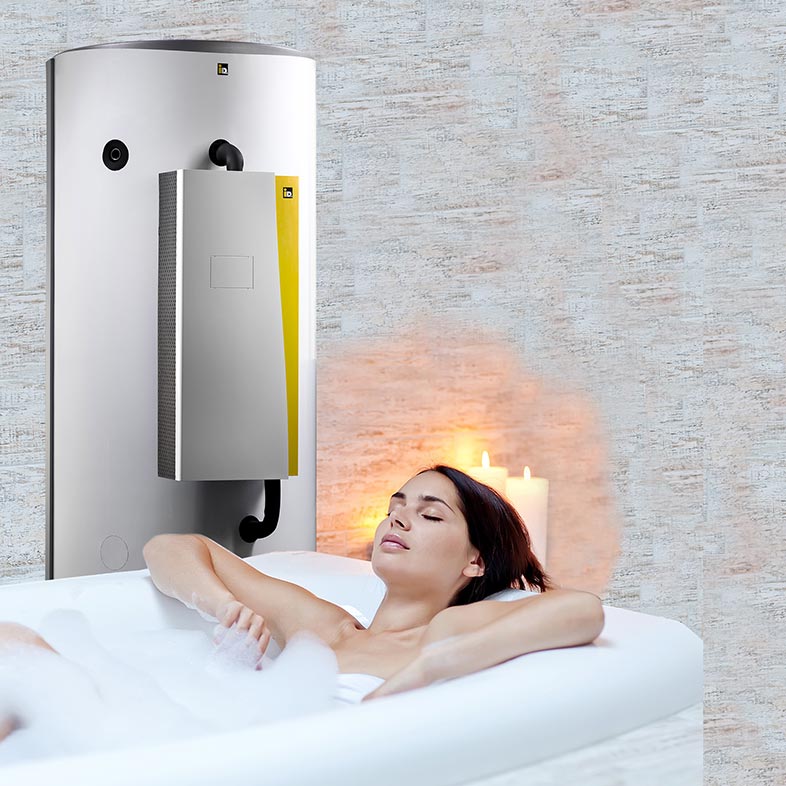A heat pump is a climate-friendly option for heating – and even cooling. It uses the available environmental energy from the earth, air or water and converts it into heat or coolness. In combination with a photovoltaic system, the heat pump is even completely emission-free and CO2-neutral.
Reduce your heating costs and opt for a modern, space-saving heat pump from iDM. No matter what form of energy is available where you live – we have the right solution for you! Our air source heat pumps, ground source heat pumps, heat pumps with hot water storage tanks and large heat pumps work economically and reliably – and ensure pleasant temperatures in your home. Simply get in touch with us, we will be happy to advise you.
PRODUCT CATEGORIES
Environmentally friendly heating and cooling – the advantages of the heat pump
The heat pump as a heating and air conditioning system offers many advantages, first and foremost the use of the freely available energy sources of earth, air and water. It is a future-proof alternative and can significantly reduce your energy costs through efficient operation.
Further advantages of a heat pump are as follows:
- Independence from fossil fuels such as oil and natural gas
- Heating and cooling with climate-friendly, renewable forms of energy
- More cost-effective than oil or gas heating
- Emission-free and CO2-neutral operation thanks to the combination with green electricity
- Suitable for both new and old buildings
- Can be used with panel heating or radiators (radiators)
- Suitable for single-family homes, apartment buildings and industry
- Easy to operate, control and monitor
- Space-saving and quiet in operation
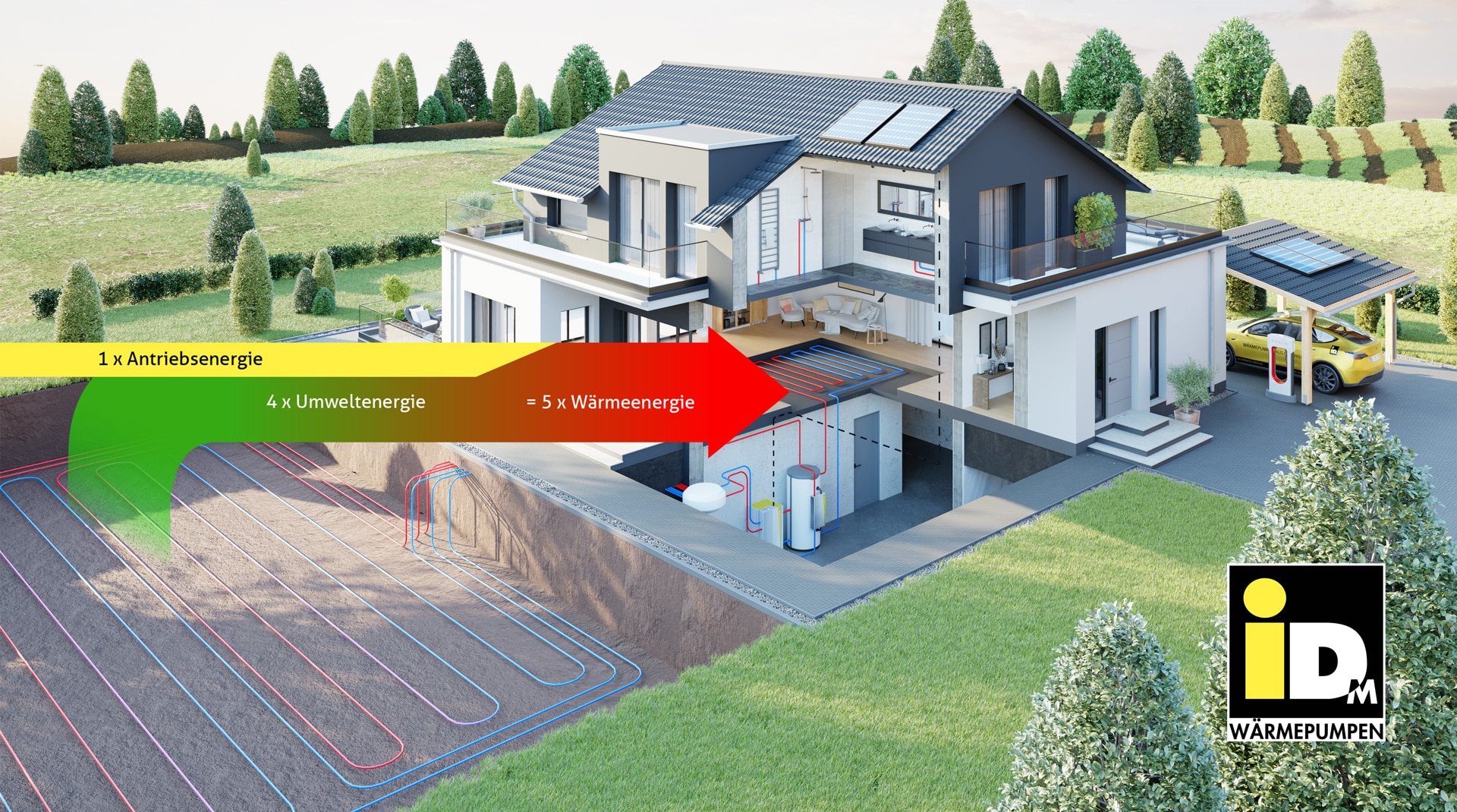
Heat pumps are also comparatively low-maintenance and have a long service life. If you combine your heat pump heating system with a cylinder such as the iDM Hygienik, you will always have hot water available in your sanitary areas and kitchen.
How a heat pump works
The way a heat pump works can be compared to that of a refrigerator – only in reverse. A refrigerator extracts heat from food and releases it into the room via the rear wall. Heat pumps, on the other hand, take the required energy from the air, water or ground, bring it to the desired temperature level and release it indoors as heating energy. This self-contained cycle, also known as a refrigeration cycle, is repeated continuously and provides your home with environmentally friendly and reliable cozy warmth.
When cooling with the heat pump, the warm air is extracted from the living spaces and discharged to the outside to ensure pleasant temperatures in summer.
The heat pump circuit explained simply:
- Environmental heat from the air, earth or groundwater is transported into the interior of the building via a refrigerant.
- The supply of heat causes the liquid refrigerant to evaporate.
- The supplied, vaporized liquid is compressed in a compressor. This caues the temperature to rise.
- With the help of the still cold heating water, the resulting hot gas is liquefied again.
- This heats up the heating water. This heat is then transferred to the house or the hot water tank.
- The pressure is then reduced via an expansion valve and the refrigerant cools down again as a result of this expansion.
- It circulates back to the evaporator so that the cycle can start all over again.
Types of heat pumps
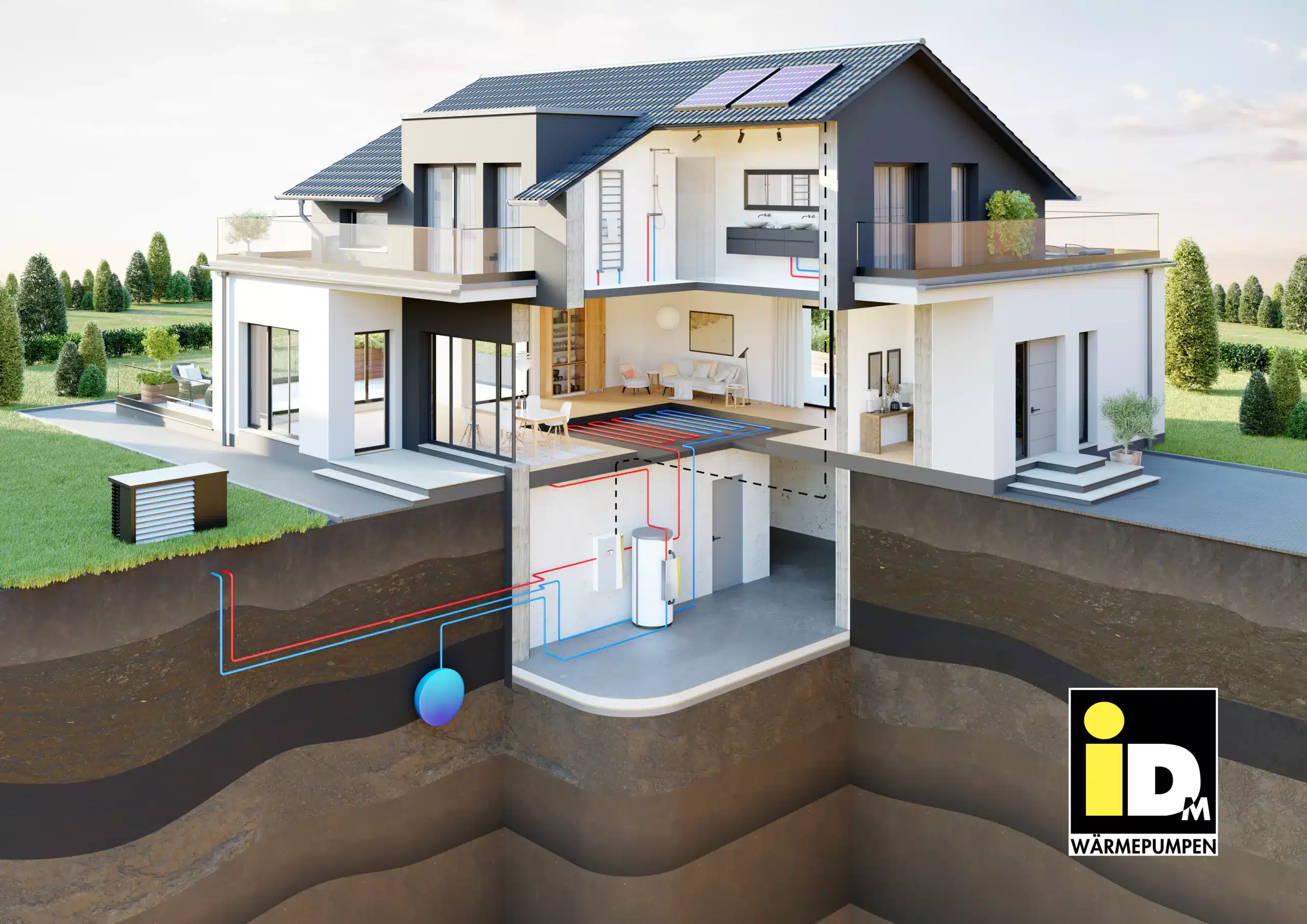
Depending on the most usable energy source, different types of heat pumps can be considered for your home. Below you will find a brief overview of the most common options:
- Air source heat pump (air-to-water or air-to-air heat pump): Air source heat pumps use the outside air as a heat source.
- Ground source heat pump (brine/water heat pump): Ground source heat pumps draw energy directly from the ground – via deep probes, ring trench collectors or surface collectors.
- Groundwater heat pump (water/water heat pump): As the name suggests, groundwater heat pumps use groundwater to heat your home.
- A heat pump with an integrated hot water storage tank, on the other hand, not only provides hot water, but can also be used for heating.
- Large heat pumps efficiently supply multi-party houses, residential complexes, hotels or industrial buildings with environmentally friendly heating.
Costs and subsidies
As heat pumps are a sustainable alternative to traditional heating systems that are dependent on fossil fuels, you can take advantage of a wide range of funding opportunities. In particular, generous subsidies are often available for replacing heating systems and renovating with heat pumps.
The costs of a heat pump vary greatly in some cases and depend on several factors:
- Design of the heat pump (size)
- Available energy source
- Type of heat pump
- Installation and commissioning
- Additional costs for the cooling option
- Integrated hot water tank
- New build or renovation/old building
The heat output of the heat pump must be adapted to the size of your home. The more output (kWh) is required, the higher the purchase costs may be. In terms of environmental energy, air is the cheapest source of heat. For geothermal heat pumps and groundwater heat pumps, there are usually additional development costs, for example for drilling holes in the ground or digging wells to reach the groundwater. The thermal use of groundwater requires a permit. Additional fees are usually payable for this permit.
As heat pumps are a sustainable alternative to traditional heating systems that are dependent on fossil fuels, you can take advantage of a wide range of funding opportunities. Generous subsidies are often available for replacing heating systems and renovating with heat pumps in particular.
iDM heat pumps for new builds, old buildings or industry
Heat pumps as heating systems are not only ideal for new builds, but can also reliably supply existing buildings with heat. Of course, installation in new builds is easier, as the heating system can be incorporated into the planning right from the start. Nevertheless, retrofitting a heat pump in an old building as part of the energy-efficient refurbishment of your home is perfectly possible in most cases.
Underfloor heating and large surface heating systems are ideal for operation with a heat pump. Of course, future-oriented iDM heat pumps also work without any problems with regular radiators, which are often found in old buildings. These do not necessarily have to be replaced, which saves you money.
iDM large heat pumps also supply large properties such as hotels, apartment buildings, commercial properties and industrial buildings efficiently and reliably with climate-friendly heating energy.
Regardless of the heat source and regardless of the size and condition of the building: At iDM, you will find the perfect solution for your individual needs. Contact us without obligation – we look forward to helping you find the right heat pump!

